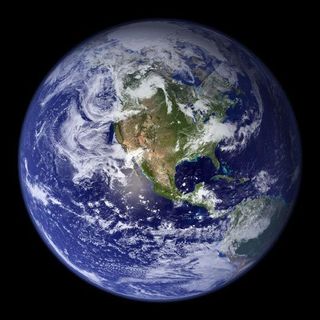
Earth Will Reach Its Closest Point to the Sun this Weekend. Between perihelion and 6 months later at aphelion there is about a 6.7% difference in the intensity of the sunlight reaching the Earth. This is one of the reasons the seasons in the Southern Hemisphere are more extreme than in the Northern Hemisphere. Perihelion is also when the Earth is moving the fastest in its orbit around the Sun. So if you run East at local midnight, you will be moving about as fast as you can (in Sun-centered coordinates) for your location. At its closest point, Earth swings to within 91,399,453 miles (147,093,162 km) of the Sun. That’s in contrast to six months from now, when the Earth reaches aphelion – its most distant point – on July 5, 2021. Then we’ll be 94,510,889 miles (152,100,533 km) from the Sun. In other words, Earth is roughly 3 million miles (5 million km) closer to the sun in early January than it is in early July. Earth will reach its closest point to the Sun for 2021 on January 2, at 13:51 UTC. That’s January 2 at 8:51 a.m. EDT. Astronomers call this celebrated point in Earth's elliptical orbit around the Sun perihelion from the Greek roots peri meaning near and Helios meaning Sun. Stay Tuned!
https://youtu.be/dDancYohqcU






 Sat Mar 23, 2024 11:33 pm by globalturbo
Sat Mar 23, 2024 11:33 pm by globalturbo

